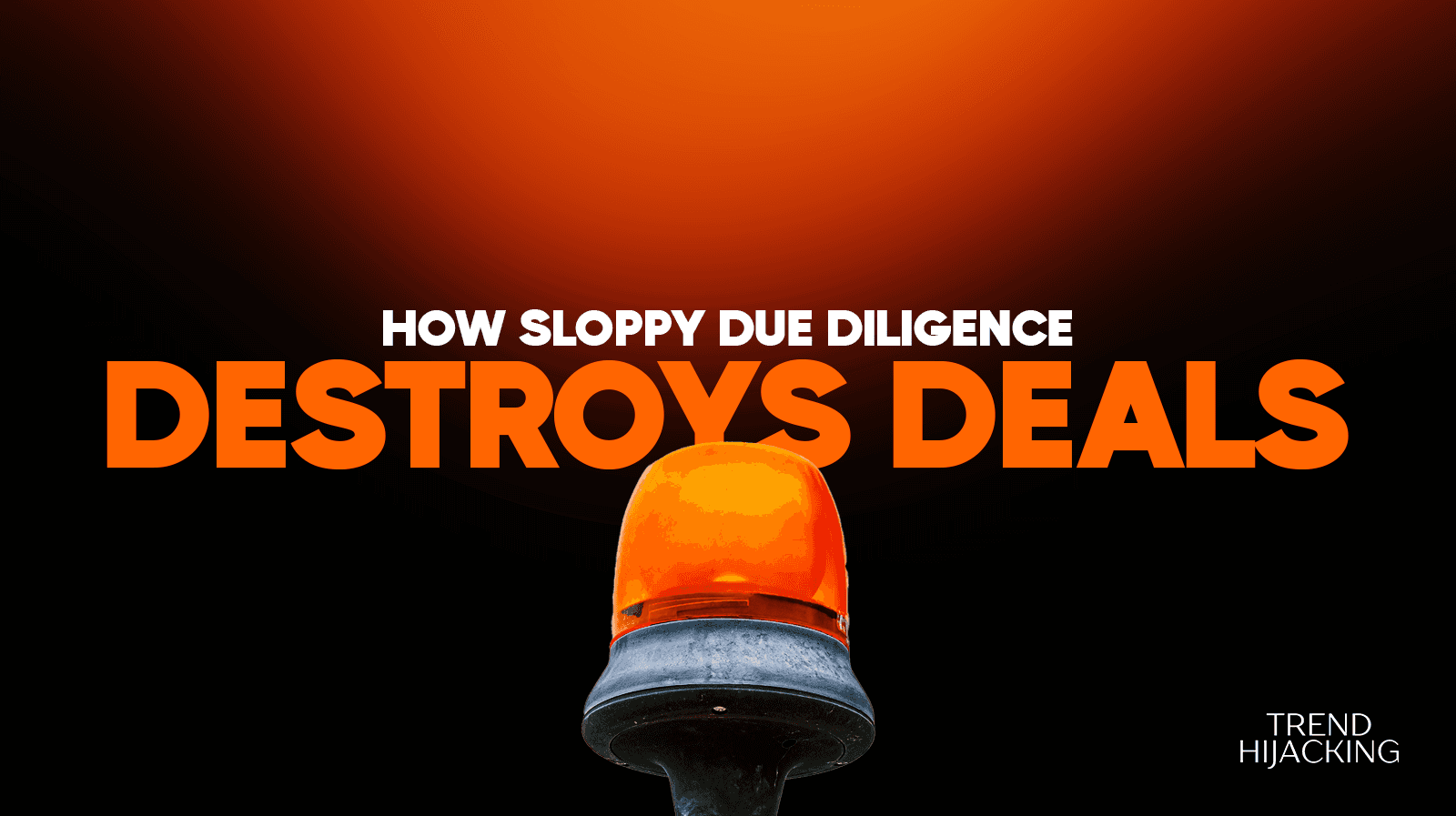How To Do Product Research Like A PRO (Find Top-Selling Items Now)
In commerce, there are only two options:
You create demand
You fulfill demand
In dropshipping, we DO NOT create demand. We are not selling unique products, we are selling products that are already being sold elsewhere by others. Ergo, we are ONLY fulfilling demand.
Therefore, we must be better at fulfilling the demand for a product than our competitors.
So long as you follow that logic all the way through, you will never, ever choose a product you can’t sell again.
We Help You Buy / Build, Manage and Scale E-commerce Brands for an EXIT
E-commerce Simplified for Busy Individuals – We handle the buying, building, and scaling, so you can focus on what matters.
Growth-Focused Strategies – From sourcing to marketing, we drive growth and prepare you for a profitable exit.
Expertly Managed Exits – We build a high-value brand designed for a Lucrative exit.
So here is our very simple multi-step process:
Find demand not being met
Investigate competition for weaknesses
Note your strengths
Develop a plan of attack
For simplicity, we’ll call this the FIND process.
Let’s dig deeper into each of these steps…
STEP 1: FIND DEMAND NOT BEING MET
So the big question is, how do we find demand?
The simple answer is we utilize proven SEO techniques.
Why?
Simple, because SEO is all about finding what people are already looking for and how to give them the content they want. This is exactly what we’re trying to do, except instead of blog posts we’re directing them to the products they’re looking for.
I use Semrush since it's an all-in-one, but you can use whatever SEO tool you want. So long as it covers all the basics of showing you:
Keyword Difficulty
Search Volume
Cost Per Click
Keyword Intent
Go into whichever keyword research tool you prefer and set your search parameters as such;
Keyword Difficulty: 0–30%
Keyword Intent: Transactional
Sort Search Volume in descending order
Now the fun part…
We are going to look for products. And there are a few basic ways of doing this:
You look at products on Aliexpress and when you find one that interests you throw its name into the keyword research tool to see what it spits out.
Use adjectives to find the exact descriptor/variant of a product someone wants
Use generic nouns to find related products concerning that broad keyword
Regardless of how you do it, you should find multiple appealing products. However not all products are created equal, so find a sampling of at least 10 products.
You will need to put every keyword into a spreadsheet with a column for its Difficulty rating, Search Volume, Cost Per Click, and a final column labeled “Opportunity Score”.
At the end, your spreadsheet should look like this:

The Opportunity Score of a keyword/product is a custom formula we’re going to make. Let us briefly go over what the Opportunity Score is and isn’t.
A given keyword’s opportunity score IS NOT absolute.
A given keyword’s opportunity score IS relative to the score of other keywords its compared to.
The higher the opportunity score the more likely it is to be profitable.
The formula we use to determine our opportunity score is as follows;
OPPORTUNITY SCORE = SEARCH VOLUME x (1 / KEYWORD DIFFICULTY RATING) x (1 + COST PER CLICK)
As you can ascertain from this formula, the basic idea is the lower the Keyword Difficulty we can safely presume the easier it will be for you to attain search volume.
This is then further modified by a higher cost per click favorably increasing opportunity. As it is a very safe bet that the more money marketers are putting into this keyword the more desirable it is.
Thus, the product with the lowest difficulty, highest search volume, and most competitive interest from marketers is the natural winner.
Now you should have a spreadsheet that looks something like this:

As you may have noticed, this formula will also show the potential of lower search volume keywords. Note that in our example Product 7 has a higher opportunity score than Product 8 despite having almost 1/3rd the search volume.
This is almost entirely due to the high CPC associated with it- an indication that this product has high marketing interest despite the low competition for the keyword.
The opportunity score formula is not perfect. It is simply what I have found to be the most reliable. If anyone else has anything different/better than they are free to share.
Regardless, the opportunity score does NOT reveal the full picture and tell you what product to sell. It simply gives us a list of products to investigate in order until we find our winner.
Need Help Launching and Scaling your E-commerce Store,
Book a Call to Have a Call with me HERE
STEP 2: INVESTIGATE COMPETITION FOR WEAKNESSES
Just because you found what, on its face, looks like a great opportunity does not mean it is perfect.
Starting with the product that has the highest Opportunity Score we will now screen each one against your would-be competitors to investigate the competitive landscape.
In your SEO tool, or another if it’s not an all-in-one, we will look at the Search Engine Ranking Positions (SERPs) for your specific keyword.
There are many factors to take notice of. Let us start with the most obvious ones to take note of in your research notes:
How many of the top 10 SERPS are sellers?
How many of the sellers are general websites like Walmart, Amazon, Target, etc.
How many of the sellers are small brands?
Many will say that if your product is sold in a general website like Amazon, Walmart, and others then your product is dead in the water.
Contrary to popular belief, that is simply false.
Why?
Two reasons:
A general store may meet the desired demand, because it may not even be advertising the availability of a product there.
People want to buy from the source. They feel it’s more trustworthy and authentic.
Prime example; you can buy Apple products from general stores yet Apple STILL has its own physical retail stores.
Yes, this is true for brands that only sell on Amazon. Their brands are worthless outside of Amazon if its their only sales channel.
With that in mind, I am MORE interested if there is no strong brand for a product in the top 10 SERPs. As it means there is the potential for an actual brand, your brand, to fill in the void.
However, this is only our first layer of competitive analysis.
Next, it is time to look at the number of backlinks and referring domains each SERP has.
First, let us discuss backlinks themselves. Yes, they are still the bedrock of SEO. No matter what anyone says, backlinks will ALWAYS be important as they are effectively a vote of confidence from other websites pertaining to the authority of your own website.
While most people believe that more backlinks = more authority, this is not entirely true. We must investigate the actual backlinks themselves. Ask yourself the following questions:
How many of your competitor’s backlinks are Do-Follow vs No-Follows?
What is the quality of the websites the backlinks are coming from?
Are they from websites that have 0 relation to the product itself?
Are the websites spammy?
You must investigate the QUALITY of the backlinks, as we know that is far more important these days than the sheer quantity of backlinks in Google’s eyes.
This is a good lead-off to quickly go over referring domains. A referring domain is a unique website that links to the web page being investigated. Knowing this, you may realize that while your competitor has a lot of backlinks they are all coming from the same website. This would be a potential crack in their armor, as many links from the same website would not be seen nearly as favorable to Google compared to every link being from a unique referring domain.
Of course, you should note if only one competitor has backlinks and referring domains if all of them are about equal, the amount of each, etc.
If a single competitor has all the backlinks, and they are both numerous and high quality… Perhaps reconsider this product.
However if in the same scenario of a single competitor having all the backlinks but they are all subpar and/or few in number that is a major indicator you could have a winner on your hands.
Likewise, if all of your competitors have a high amount of backlinks you should reconsider. If all of them have a few backlinks spread out among them then you can make a determination if it would be worth stepping into the ring or not.
What is a low amount of backlinks and referring domains?
I couldn’t tell you. That is up to your own ability. If you know a lot of bloggers in the space this product exists in then you can get their backlinks very quickly to boost your website up automatically. If you have 0 connections, however, and the outreach needed would, in your eyes, be too much to handle then look elsewhere.
Of course, the amount of traffic each competitor in the SERPs get is of vast importance as well. Naturally, the top position in the SERPs will have the most traffic. All the traffic being centered on a single website is not necessarily the kiss of death.
Particularly if it is to a general store, as it would indicate there is “no other option’ a consumer has seen. However, with a good brand, they can very easily be tempted to buy from the ‘source’. If it is a position where it is a branded website focused on that product, and related products, that has all of the traffic… Perhaps reconsider.
Not unless you are confident you can outdo them in some capacity as we will get into soon.
Next, we are going to take a deeper dive into each competitor. Open up each of the relevant sellers in the top 10 SERPs.
Note everything they do. Including the wording they’ve used, the exact details of the offer they’re providing, the kinds of pictures they use, anything and everything.
Make spreadsheets/competitor files of all the similar words/phrases used, of all the pictures used, of the page layouts, of the exact product titles they use. You have to know everything about every competitor.
Do all of this for every product on your database. Start eliminating products with high-quality competition, and those with a brand that has built a moat around their product that you cannot overcome.
Of course, there are more elements of your competitors you could research as well. Such as their advertisements, their social media presence, etc. However, all of this should go without saying. Leave no element of your competitors untouched.
While this is a bit subjective in the sense that the threshold for what you consider to be too ‘high competition’ relative to your own abilities to execute, it is better than nothing.
Once you have chosen a product you believe you can be legitimately competitive with it is time to move onto…
STEP 3: NOTE YOUR STRENGTHS
This is where the deep dive into your competitors pays off.
There is a very simple strategy you can employ for product selection success.
Use what already works, and improve what your competitors do worse.
Your competitors are already in a better position than you, who hasn’t begun to execute yet. So why would you deviate from what you KNOW works?
The name of the game is being BETTER than your competitors in some area to differentiate yourself. This doesn’t mean copying your competition flat out, but you have all of the working examples so surely you can make a version that is of relatively equal footing.
There are a few different areas you can strive to be better than your competition in:
SEO
Paid Ads
Content
Web Design
Product Offer
Let us take a brief look at each.
SEO:
Search Engine Optimization can be boiled down to, ‘Outreach’. Whether it be an outreach to search engines or to the people you want to share your content. At the end of the day, it is still outreach.
Does your competitor write articles? If so, can you write better ones? Does your best competitor not have a lot of backlinks? If so, are you able or willing to take the time to reach out to others in the same niche/industry to link to your content?
SEO, of course, is fantastic to be good at because you’ll receive the benefits of organic traffic. This organic traffic can translate into sales that are much more economically advantageous than sales achieved through advertisements. Ads are not only a major expense to you but also eat up the profit margin of each of your sales. Whereas sales obtained through organic traffic only incur the cost of goods for your product.
Paid Ads:
This is the bread and butter of practically every dropshipper on this subreddit. However, not all advertisers, or ad campaigns, are made equal. Hell, your competitors might not even be RUNNING ads. Giving you a very distinct advantage in being able to get first in line for your competitors' would-be customers. Or perhaps their ads are poorly structured or are not targeting the most receptive audience. That is for your own investigation of your competition to determine. Your SEO tool should also be able to tell you what ads are running for a particular keyword so you can put it in your competition file.
The point is, if you can do better in one of these areas of paid advertisements:
Superior ad creatives
Superior ad copy
Better audience insights
More capital to deploy
Then you may have an advantage over your competition.
Content:
This is an often overlooked area for dropshippers, as they tend to be more fixated on simply finding a product to test on with ads. However content can be a massive boon to your burgeoning business. Content comes in the form of social media posts, blog posts, videos you make about your product and/or business and images.
If you are a creative person then this may be where you can get your advantage.
If your competition has a blog then you ought to have a blog as well. However, the way you utilize that blog can be vastly superior to them.
Does their blog only produce 1 article a month? Is it even less frequent than that? Is it not helpful content to the consumer? Is it all about their accolades?
If so then you will have a distinct advantage in creating superior blog content to not only entice traffic to come to your website but also show that you are the more engaging brand to follow.
Make the same insights as your competitor's social media presence. Does it even exist? Do they have an engaging social media page? Or pages, even?
Do they have a YouTube page? How many videos do they put out? How frequently? How many views and subscribers do they get?
If they have all the bells and whistles but none of them are performing well, then you may have a chance to outdo them by focusing on a single area.
When it comes to content the name of the game is to make the most shareable content. By this, I mean you should endeavor to be a PRIME SOURCE OF INFORMATION. Do that and getting backlinks, shares, etc. will be no issue. Everyone wants to use primary info, and if you can make your business the source of choice for information regarding your product and/or niche then you will get many, many shares.
Web Design:
I can’t tell you how many websites still look like they’re from the 1990s or early 2000s. This is only a benefit to you, however.
If your competitor's websites look like utter garbage then you of course have a huge advantage in being able to leverage premium themes.
Likewise, the actual buyer journey from reaching the website to completing a purchase may be less than ideal. This is yet another area you can perhaps create an advantage for yourself.
Overall, the case is clear; if you can make a website that converts better than your competitors by providing a better customer experience that will give you a distinct advantage over your competitors. It is not enough to get a lot of traffic to your website; your website must be able to make the most of the traffic that comes to it.
Product Offer:
Last, but certainly not least, is your ability to offer your potential customers a better offer than your competitors. There are 3 simple ways to differentiate your product offer compared to your competitors:
Faster Shipping
Better quality
Cheaper pricing
These are all also aspects of your competitor’s product offering to investigate.
How fast are their shipping times? Does shipping take a month? A week? If you can fulfill the same product with 2-day shipping that would give you a substantial advantage.
Likewise, people are always willing to get the best version of something they like. However ‘better’ can be both objective and subjective. Objective quality refers to things pertaining to the actual functionality and usability of the product. If you can give a version of your product that lasts longer, gives better results, or gives the usual result faster it will be seen as ‘better’. Subjectively, however, you can position your product as better by being more informative, having better product copy, and better branding to make it look unique. Those are changes that are not objective, as they don’t affect the actual product itself. However, your customer could very well see these changes as meaning your business is the premier seller of this product.
The bottom line is this; I’ve outlined several areas and sub-areas in those areas where you can do better than your competition. If you believe you can execute on one of those elements better than your competitors then certainly feel free to go for it. If, however, you are left feeling uncertain or don’t feel you can do anything better than what your competitors are already doing… Then the product is a no-go and it's time to move down to the next one on your list.
We Help You Buy / Build, Manage and Scale E-commerce Brands for an EXIT
E-commerce Simplified for Busy Individuals – We handle the buying, building, and scaling, so you can focus on what matters.
Growth-Focused Strategies – From sourcing to marketing, we drive growth and prepare you for a profitable exit.
Expertly Managed Exits – We build a high-value brand designed for a Lucrative exit.
STEP 4: DEVELOP PLAN OF ATTACK
By now you should have a product that you’ve investigated thoroughly, sized up the competition, and noted where you can do better.
Now its time to execute.
Of course the steps here differ between new shops and already existing shops.
For a new shop, create branding for the industry/niche your product exists in such that while it fits your ‘flagship’ product so to speak you can expand it to encompass several products at any time.
If you have an already existing shop then it is a matter of adding your new product and adjusting your website as desired.
You already have your competition file with all the details from pictures used, product and ad copy, web page layout, and everything else.
As said above, stick with what works and improve what you can.
Create a to-do list of everything you need to do to make your selected product available for purchase. Since it’s different for new shops and existing shops I can’t give a generalized list of bullet points.
There isn’t much else left to be said at this point. I can’t tell you exactly what good execution is when I don’t know your specific situation.
You just have to do it.
I hope you’ve all enjoyed this mammoth of a post and find some use in it.
Lastly, please share this with everyone you know who’s having trouble doing product research. Whether its their first product or one they want to add to their store, I believe this post may hold some information they find relevant to their situation.
I’ll maybe make some posts sometime regarding other business topics. Let me know if there’s anything specific any of you would like me to write about.
Need Help Launching and Scaling your E-commerce Store?
Book a Call to Have a Call with me HERE
A Done-For-You E-commerce Business
Discover how we Build, Launch, and Scale a 6-figure/month Business for You
Learn more
The 6-Step Blueprint to E-Commerce Acquisition
See how we Acquire, Convert, and Scale with Real Case Studies to Prove It.























